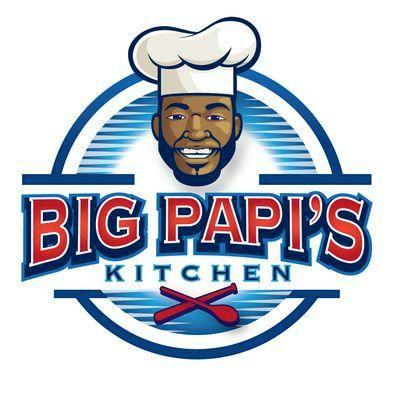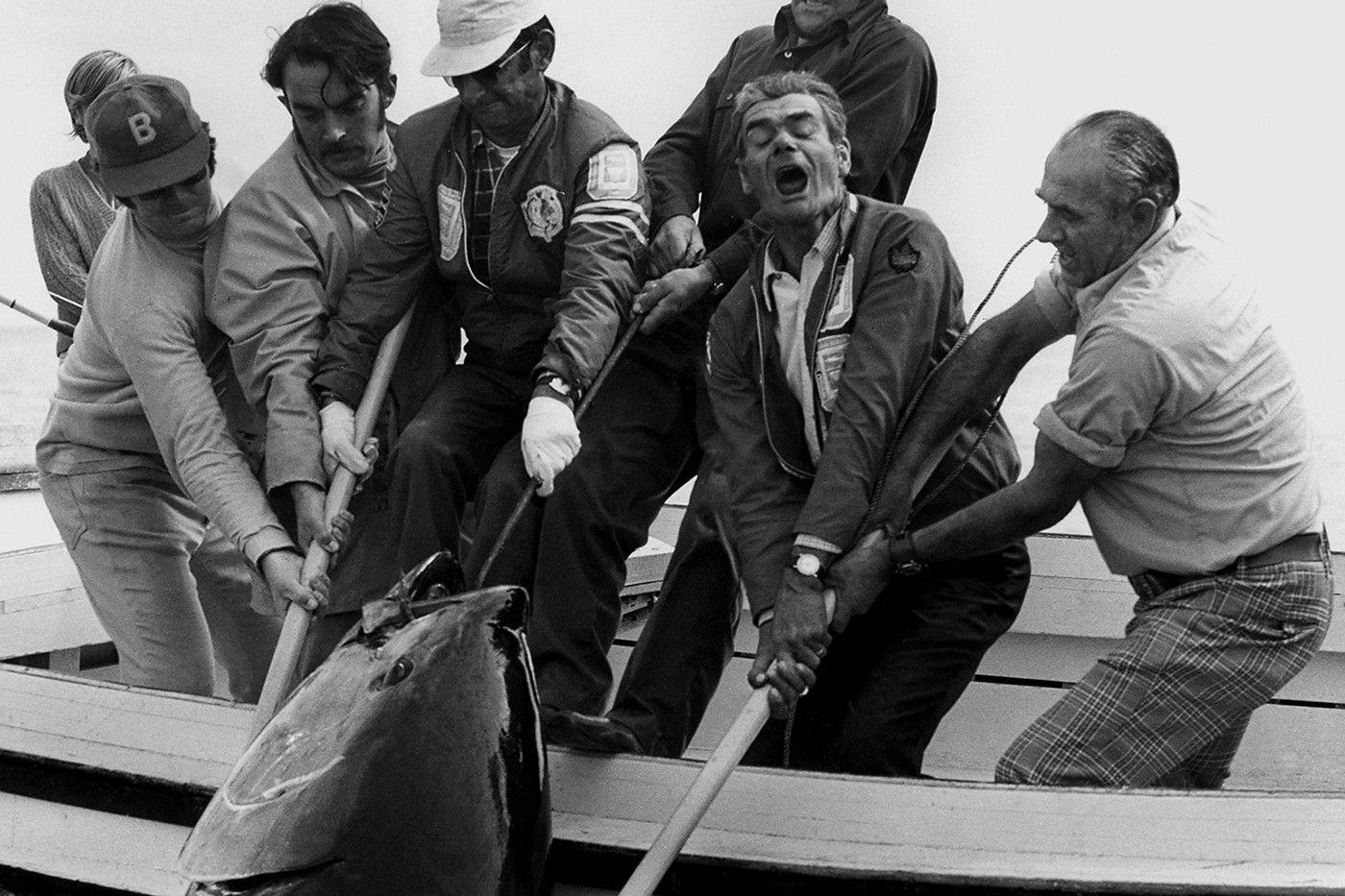David Ortiz is going to retire. Maybe you’ve heard. The Red Sox legend — one of the great postseason performers of all time — is enjoying a late-career renaissance, batting .316 with 25 home runs and 85 RBI in his age-40 season. He’s led Boston to a 58–46 record and the thick of the American League East race, and he plans to step away from the game this fall, vacating the spot that he’s laid claim to in the Red Sox lineup since 2003.
Many people have pleaded with the big man, ahem, the Big Papi, to change his mind and postpone his retirement plans. He insists that he’s done, but that seems almost inconceivable. How could a player who remains at the peak of his powers decide to hang it up? And his imminent departure raises two questions: What will Ortiz do next? And who will follow in his footsteps?
The first question has an unconventional answer, and it involves a baseball bat–size spoon (or a spoon-size bat?) and a chef’s toque.

The Red Sox slugger has launched his own line of Caribbean-inspired foods, from tortilla chips (“Home plate shaped!”) to salsa (with black beans!) and hummus (also with black beans, which presumably is why it’s Caribbean-style?). In case you’re wondering, the chips are pleasingly salty and have a nice crunch (though the home plate shape makes them sort of awkward to bite into and ill-suited for dipping) and the salsa is a hearty blend of tomato, onion, cilantro, and beans that is moderately spicy (if a little watery).
The second question is more complicated, and its answer has ripple effects that extend far beyond Boston. Ortiz could be the last iconic player at his position. So when Big Papi is in the kitchen for good, will anyone take his place as a true star designated hitter?

History is a curious thing. It is unchangeable, set in stone. Yet how it is cut into that stone — the particular method, chisel or jackhammer — can change the mark that it leaves.
After the 2002 season, the Red Sox made several moves designed to end what was then an 84-year title drought. At the time, the Ortiz signing looked like it would require a chisel, with the Boston Globe saying the move completed “a winter of shopping at Wal-Mart.” Now it’s clear that it is worthy of a jackhammer — the addition of a foundational piece, one of the best free-agent signings in baseball history.

After being released by Minnesota, Ortiz rebounded to become one of the best overall hitters in the game and inarguably one of the great designated hitters in history. (Skeptics ascribe his ascension to performance-enhancing drugs, despite the only evidence linking Ortiz to PEDs being the 2009 leak of his positive test for an unspecified substance during “confidential” survey testing in 2003.) His prominence at the position has been cemented by his resurgent 2016 campaign, but his legacy has long since been secure.
“I don’t know if he needed this season to be in that category,” Vince Gennaro, president of the Society for American Baseball Research, said in an interview. “But this [season] certainly seals the deal. If Edgar Martínez is the hallmark to this point for DHs, I think we’d perhaps have someone to at a minimum share that mantle with him. This is really a remarkable career he’s had.”
Since 2003, Ortiz is ninth in the majors in Baseball-Reference WAR among position players … without making any notable contributions on defense. To date, Frank Thomas is the only player who logged a majority of his games at DH to be elected to the Hall of Fame, with Martínez so far falling well short of election. However, it appears Ortiz should have a decent shot at becoming a Hall of Famer (ask Ken Griffey Jr.). But will he be the last of his breed?
As long as the designated hitter position exists, there will be stars who DH to get a half day off or to keep their bat in the lineup despite an injury that keeps them from playing the field. Yet roster-usage patterns and an increased leaguewide emphasis on defense means teams will likely be hesitant to seek out a future slugger who will spend the majority of his career in the dugout.
“From a roster-building standpoint,” Blue Jays president Mark Shapiro said in an interview, “having been in a situation before in my life where we had a pure DH, it’s something I would like to avoid.”
Shapiro, of course, came to Toronto from Cleveland, where he was one of the chief decision-makers on a team that employed true DH Travis Hafner for 10 years, making his admission that he’d like to avoid having a similar player somewhat of a stunner.
“I think it is not advantageous to have a full-time DH who has no other versatility,” Shapiro said. “I do think the position clearly provides you an opportunity to provide some limited level of rest for position players.
“But it’s not something I would desire to use to build a team.”
An anecdotal look at the league seems to suggest this view isn’t confined to Toronto.
There are only five active players to have played more than 51 percent of their career games at DH, and of those, two are on this season’s Twins (Kennys Vargas and Byung-ho Park). Of the nine batting-title-eligible players to have played at least 51 percent of their games at DH this season, only the Rays’ Corey Dickerson (27) is younger than 30.
“You definitely don’t groom young guys and say, ‘OK, you’re gonna be our designated hitter,’” Gordon Edes, a former ESPN colleague of mine who is now the Red Sox team historian, said in an interview. “When teams are scouting guys, they’re looking for more than just the two skills — hit and power.”
Though elite-level producers such as Ortiz, Martínez, and Thomas are obviously valuable, the fact that they can slot into the lineup in only one spot limits their utility.
“Just having experienced what it was like to have a roster with one inflexible player,” Shapiro said, “it was something that continually was a challenge for us. And [it] then also made the player unusable for the interleague games, which is obviously a decent number of games on your schedule.”
Since MLB went to having 15 teams in each league in 2013, thereby necessitating year-round interleague play, that roster flexibility takes on a renewed importance. It doesn’t make sense for a franchise to sink large sums of money into a guy who plays a position that disappears any time he’s in a National League park. So Ortiz’s final months as a big leaguer could serve as more than a goodbye to one of the game’s fiercest and most beloved personalities; for DHs, it could mean the end of an era.

Through four months of Ortiz’s retirement tour, the big slugger is leading the American League in doubles (35), slugging (.643), OPS (1.050), and OPS+ (172). He is leading the majors in wRC+, according to FanGraphs, and also has the unofficial lead in sunglass-rocking, corporate-branded gnome giveaways:
In 14 seasons in Boston, Ortiz has averaged 3.7 offensive WAR — a mark equaled or surpassed in a single season only 49 times by batting-title-qualified hitters playing at least 51 percent of their games at DH since the position was introduced. Martínez, the patron saint of designated hitters, owns seven of those. Ortiz is next with six. A couple of guys named Paul Molitor and Frank Thomas check in after that, with four each.
Only four active players have ever met or exceeded Ortiz’s average in oWAR from his Boston tenure while playing more than half their games at DH. And of those four, only Edwin Encarnación has done it more than once, and none are younger than 33. To put Ortiz’s huge swan song in perspective: Only four players 40 or older have posted a .900-plus OPS: Ty Cobb, Stan Musial, Willie Mays … and David Ortiz. Of that group, Ortiz has the highest OPS by far.
Soon, though, Ortiz will turn his focus from crushing baseballs to Caribbean-inspired foods and recorded wake-up calls, and it’s unclear who will replace him as MLB’s signature DH. The Red Sox don’t have a natural successor, with Hanley Ramírez already 32 and Pablo Sandoval 29 and recovering from shoulder surgery. Ortiz suggested Encarnación, but he’s 33 and currently plays for Shapiro’s Blue Jays. You could see Kyle Schwarber turning into a stud designated hitter, but he’s coming off an injury and plays in the National League. Miguel Sano could be a star DH, too, but Minnesota seems determined to find a landing place for him in the field.
“I think it’s somewhat situational by nature, it’s somewhat market-driven by nature,” Shapiro said. “Certainly a roster that’s full of superstar players in one of the largest markets is more capable of carrying a [dedicated DH], when a small-market team with a smaller roster — which is obviously where I came from — is gonna have more of a challenge of having a player who’s limited to just being a DH. It’s gonna need versatility, right?”
If commissioner Rob Manfred decides to change from the status quo and implement the DH in the NL as well, the calculus will change. But for now, the next Big Papi will likely come around the same way the original did.
“I think it will happen a little bit more by chance,” Gennaro said. “I don’t think teams will go out and seek the next David Ortiz. I think they’ll go out and look for the next big bat, [but] look for it in players with acceptable defensive value.”
